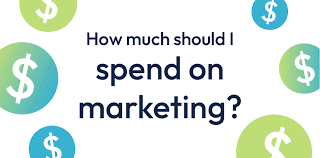
If you own a local or regional business, one of the most common questions you’ll face is: How much should I be spending on marketing each year? The answer depends on your goals, your competition, and where your business stands in its growth journey, but there are solid guidelines you can use as a starting point.
The 5% to 10% Rule of Thumb
Most experts agree that local and regional businesses should allocate between 5% and 10% of their annual gross revenue to marketing. This range strikes a balance between staying competitive and maintaining healthy margins.
According to Forbes, “If you want to maintain current revenue amounts, then 5% to 10% of sales allocated toward advertising may suffice. If you want rapid growth, then you may need to push that number higher—possibly to 20% or more depending on your industry.”
The U.S. Small Business Administration (SBA) supports this range and notes that small businesses often underinvest in marketing, which can slow growth and reduce visibility in the community.
It Depends on Your Industry and Goals
Different industries demand different levels of marketing investment:
-
Local Retailers & Restaurants: Typically spend 3% to 6% of revenue, focusing on promotions, reviews, and local events.
-
Service Providers (contractors, salons, repair shops): Often budget 6% to 10%, using a mix of digital ads, SEO, and referral incentives.
-
Regional B2B Businesses: May spend up to 12% if building authority and trust is essential to the sales process.
If you’re just getting started or launching in a new market, you may need to lean closer to 15–20% of revenue in your early years to build brand awareness and attract customers.
How to Break Down Your Marketing Budget
You don’t have to spend big, but you do have to spend smart. Here’s how MarketingProfs suggests dividing a marketing budget:
-
60–80% on direct marketing (Google Ads, email, local mailers, print ads, etc.)
-
10–20% on brand awareness (sponsorships, events, social media)
-
10–20% on lead nurturing (retargeting ads, email follow-up, customer loyalty tools)
A report from Asymmetric Pro adds that “growth-focused local brands in competitive markets are more likely to dedicate 10–15% of revenue to consistent, omnichannel marketing.”
Tips to Make Every Dollar Count
Whether your marketing budget is $5,000 or $500,000, local businesses should focus on tactics that deliver them the best audience for their company. They should avoid falling victim to the “survey of one” and buy the media that they themselves consume.
-
Be Visible – Invest in local media like magazines and newspapers, Google Business profiles, and review platforms.
-
Stay Consistent – Don’t start and stop your marketing; consistency builds trust. It is better to run smaller ads more often.
-
Test, Then Scale – Run three-month test campaigns. You need time to see if an ad works. Try different channels and double down on what works.
-
Track ROI Over Months, Not Days– Know which efforts bring in leads or foot traffic and which don’t over a three-month period of time. Do not try to track ROI daily.
-
Invest in Retention – It costs less to keep a customer than to get a new one.
Final Thought: Marketing Is Not an Expense—It’s a Growth Investment
When you’re running a local or regional business, your marketing budget isn’t just about spending—it’s about smart investing. A well-planned marketing budget keeps you visible, competitive, and growing in your community. Start with a realistic percentage of your revenue and adjust as you track results.
As the Harvard Business Review puts it, “The most successful companies view marketing not as an expense—but as an investment in growth.”
